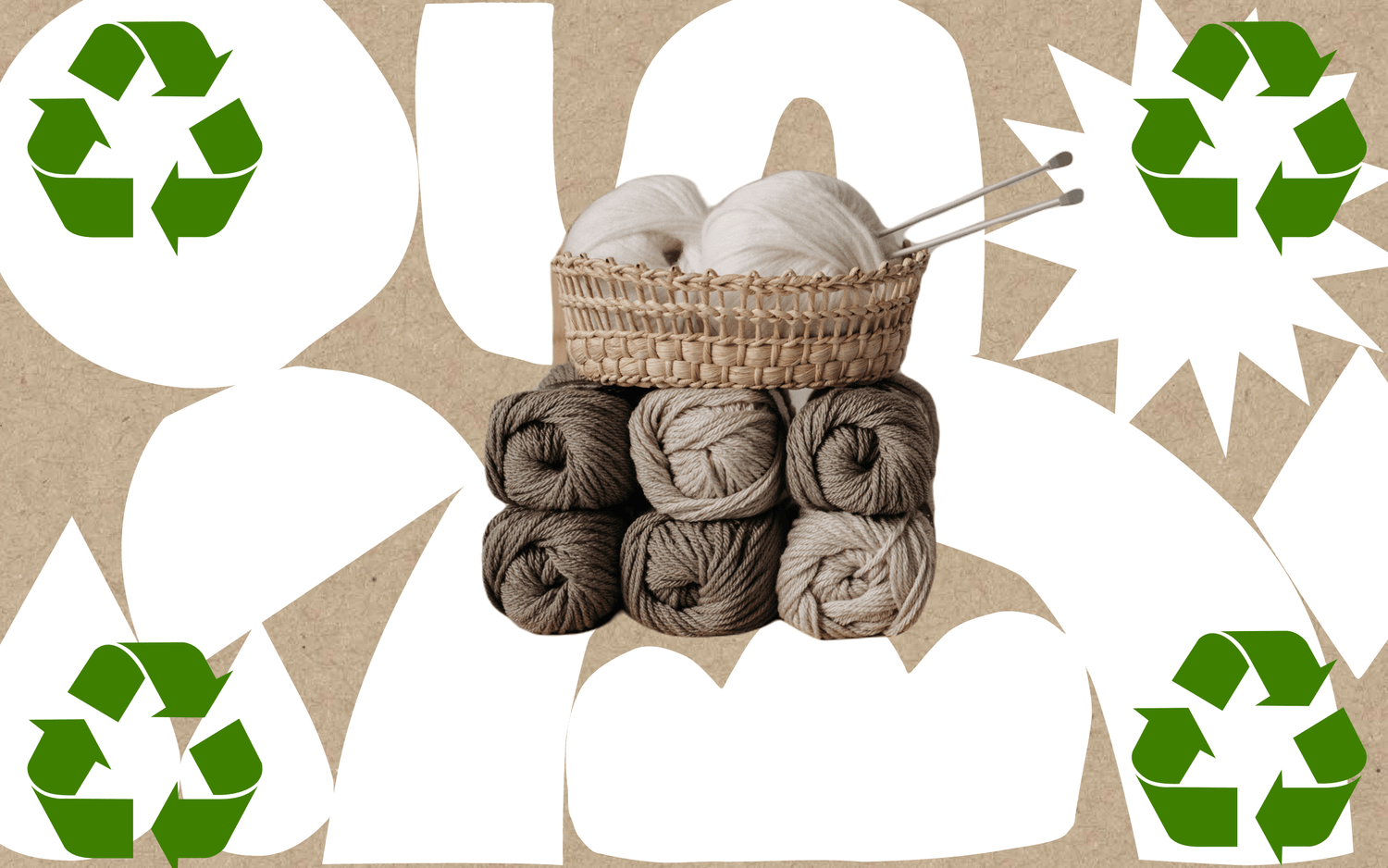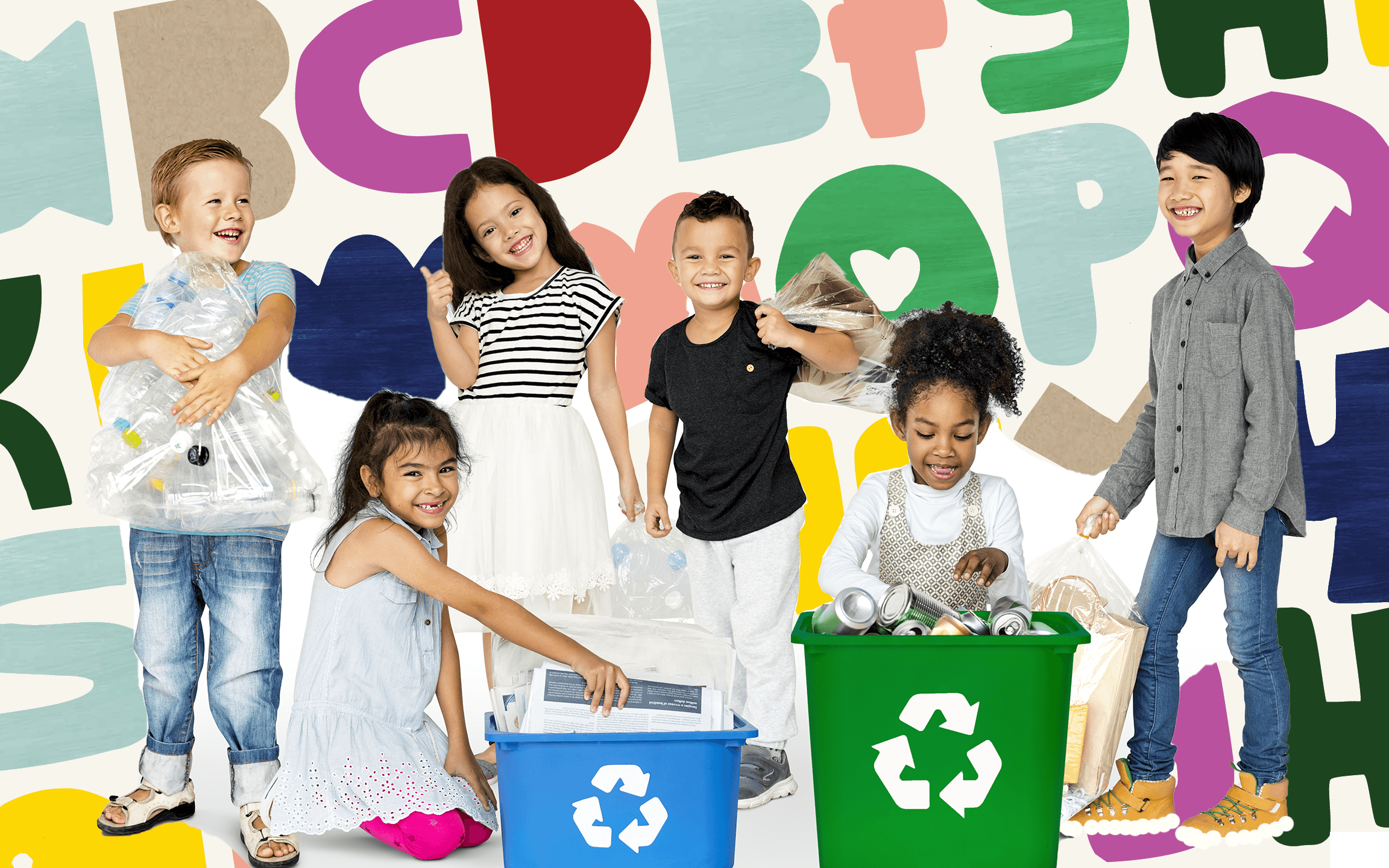Cotton is an incredibly versatile material and can be produced organically. However, if you’re looking for the most eco-conscious cotton, recycled cotton is one of the best options out there. Recycled or upcycled cotton is made using post-industrial and post-consumer cotton waste.
Recycled cotton is the most sustainable alternative to both traditional cotton and organic cotton. It bypasses the use of billions of liters of water in its production while keeping cotton clothes out of the landfill. These two reasons alone make it one of the most sustainable fibers on the market.
Recycle and Upcycle

We all wish that we could continue to wear our favorite cotton tee forever, but at some point, after a few years of solid love and wear, it begins to be socially unacceptable to wear something with that many holes in it.
If clothes lasted forever, it would make life a lot simpler, but sadly, that’s not the case. Clothing products tend to get worn out, dusty, and generally old-looking after a lot of wear, tear, and fiber break down due to continuous washing and drying. The texture of the fabric may become something that you don’t want to keep wearing if you don’t have to. Purchasing quality, sustainable clothing helps with this, but it still wears down eventually.

However, when it’s time to get rid of clothes, don’t just throw them in a garbage bag. Even if they don’t look their best, old clothes can and should be recycled and reused.
You probably can’t donate them if the clothes are particularly torn up—most thrift shops won’t take them, and it’s not advisable to give ripped up, dirty things to a charity, so what do you do? You can still recycle clothes and shoes that aren’t in good shape. It may take a little more time and a little more effort to recycle your clothes, but we promise that it is worth it.
So what can we do with our clothes once we can no longer wear them?
Not all clothing is in a state that can be re-worn, and not all second-hand shops and thrift stores have the connections to recycle these unusable clothes.
So, what is the best way to ensure that your old clothes aren’t ending up in a landfill? We’ll uncover the facts about recycling cotton, how it is made, and how it can be used in ways that benefit consumers and the environment.
What Is Recycled Cotton?

- Recycled cotton is when cotton clothing or other manufactured cotton items are broken down and reused to create new products.
- Recycled cotton can also be cotton fabric that is reused to create something new before it is broken down. This process is often called upcycling over recycling.
- In upcycling, a set of cotton t-shirts might be used to create a quilt, or a cotton bed sheet may be used to make a cotton dress.
- Cotton t-shirts can be cut into yarn and crocheted to create a whole new clothing piece like a hat or a scarf, or even a blanket.
- Large pieces of cotton clothing like saris can be quilted together using a traditional sewing method in India called Kantha that can be used to create entirely new and unique clothing items.
Is Recycled Cotton Safe?
Recycled cotton is safe to use. It is a great way to reuse pre-consumer cotton waste from the manufacturing of cotton products and the post-consumer waste of unwearable cotton products.
Consider how everything from your t-shirts to your bedsheets has to be cut out of a roll of fabric. What happens to those fabric scraps that are too small or not worth the time to be made into other items?
Many companies already sell their waste to companies that use cotton waste to create new items. This can be anything from washcloths and rug pads to whole clothing lines.
Post-consumer cotton waste is when a garment is no longer able to be worn or used anymore. Instead of these items ending up in landfills, these items can be collected, sorted, broken down, and reused to make other cotton products.
Is Recycled Cotton More Expensive?
In some facilities, recycled cotton can be more expensive than virgin cotton production. However, some facilities set up to produce yarn from recycled cotton can be very efficient and save time and money throughout the production process, not to mention saving precious resources like water.
Water is the number one resource used during the production of cotton. Not only does cotton-growing require millions of liters of water to grow, but it also needs water for pesticides. Producing new cotton can also pollute water due to production run-off, making the water less usable to animals and humans.
Textile firms discharge millions of gallons of chemically polluted water into our rivers every year. It’s reported that 200 tons of fresh water per ton of dyed fabric can be used in a single factory. This not only absorbs water, but the contaminants in developing communities pollute the water, causing both environmental harm and health problems.
Recycled cotton can be more expensive simply because more people are employed in the making and remaking of this fiber and they tend to be paid fair wages.
How Is Recycled Cotton Made
The recycling process of clothing isn’t as simple as you think. A recycled t-shirt is not going to be remade into a new t-shirt.
Remember that pre-consumer waste we mentioned above? Most clothing items made from recycled cotton will be made from pre-consumer waste. In this way, no additional water resources will have to be used, outside of dying, in the manufacturing of the clothing article.
Pre-consumer cotton is an opportunity in the fashion community to take a more assertive stance at protecting our planet and environment. Although pre-consumer recycled cotton is not the only way we should be recycling cotton, it creates an opportunity to continue to create wonderful, beautiful items of clothing from fibers that would end up in landfills and take years to break down.
Especially with the onset of fast fashion, so much pre-consumer waste is just tossed out if it is not recycled.
Post-consumer cotton material is heavily sorted. The items that can be resold in thrift stores and used clothing stores are recirculated. Those that are damaged and no longer wearable are sorted as such and sold to other companies who may recycle these items into rag or carpet or even stuffing and insulation.
Recycled cotton can have its drawbacks and obstacles, and there are definitely still challenges to be tackled around quality and chemical protection. Still, it is worth taking note of the ability these fabrics have to reduce the effect of fashion on the environment.
How Is Recycled Cotton Used?

Pre-consumer and post-consumer cotton waste can be broken down using a similar process:
- First, the fabric is sorted by color and type.
- Next, manufacturing machines with large teeth shred the fabric down until it is simply fibers.
- These fibers are then spun to create new threads and yarns that can be woven together to create new clothing or products from the recycled cotton.
Where Can You Recycle Cotton
It might not be as easy to recycle textiles as tossing things into a bin, dragging them to the curb, and waiting for someone else to pick them up, but that doesn’t mean it’s impossible.
The general population needs to know that they can dispose of their non-wearable cotton clothing through several organizations that make it easy to do so. Check in and around your area for clothing recycling bins, many of which will take clothes in any condition and drop off your pieces free of charge.
Be sure you are only donating usable and wearable clothing to Habitat Stores, Goodwills, and Salvation Army stores. They may recycle some fabrics, but in some cases, they still dispose of unwearable fabrics via the garbage.
To ensure that your unwearable clothes don’t end up in a local landfill or in a landfill across the ocean, do the research, and become an informed consumer. Know where you can recycle what fabrics, shoes, clothing types, and more even before you buy.
Recycle Cotton Is the Future
Every item of clothing and every piece of cotton scrap that is recycled keeps that cotton out of our landfills. Not only does recycling cotton waste save precious space on our planet earth, but recycling cotton also helps cut down on commercial water usage. This decrease in water usage protects our wildlife from herbicides, pesticides, insecticides, and fertilizers that are used to grow new virgin cotton.
As a consumer, it is our responsibility to know where we can recycle our cotton clothing and what recycling this clothing does to protect our environment today and our environment for our children and grandchildren.
Sources:
https://trashisfortossers.com/how-to-recycle-old-clothing
https://earth911.com/living-well-being/style/recycled-clothing-fabrics/
https://www.theconsciouschallenge.org/ecologicalfootprintbibleoverview/water-clothing
http://textileaid.blogspot.com/2019/03/recycled-cotton-benefits-and-challenges.html







Leave a comment
This site is protected by hCaptcha and the hCaptcha Privacy Policy and Terms of Service apply.